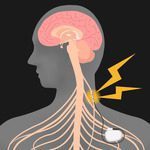If you were to ask a recovering alcoholic or addict if they wished that they made different associations in their brain when they thought about a drink or a drug, they would probably say “yes.” Those in recovery from addiction have unhealthy relationships with certain substances. And even after drugs or alcohol negatively impact their life, they will still go back for more.
Addiction, or rather feeding one’s disease, is a full-time job that requires steadfast vigilance. The amount of energy required to keep from going into withdrawal is mind boggling. You know that such behaviors are harmful, but you do them anyway. Even after achieving some clean or sober time, addicts and alcoholics will find themselves being drawn back to old behaviors that are not conducive to healthy living and experiencing cravings. Ultimately resulting in a relapse.
The human brain is great at storing memories of the good times under the influence, not so good at holding onto the negative memories of use. Such as the dark place substance use brought them to. In order to combat that reality, those who are successful at acquiring long-term sobriety must fill in the void that drugs and alcohol once filled. Without doing so, success is unlikely.
Learning new, healthier behaviors is no easy task. After years of self-destructive tendencies, living in recovery can be extremely difficult. What if there were a way to force the extinction of behaviors associated with seeking drugs, and replace them with those (behaviors) conducive to healthy living? It turns out, that there may be a way to facilitate such a reality in the near future.
New research suggests that vagus nerve stimulation (VNS) therapy could help addicts and alcoholics overcome drug addiction by reducing cravings, according to UT Dallas News Center. The findings were published in the January issue of the journal Learning and Memory.
The U.S. Food and Drug Administration (FDA) has approved VNS therapy for treating certain illnesses (i.e. depression and epilepsy), the article reports. The procedure involves sending a mild electric pulse through the vagus nerve located in the neck.
“We are studying extinction learning and how vagus nerve stimulation can help subjects learn a new behavior that is opposed to an existing, maladaptive behavior like drug-taking,” said senior author Dr. Sven Kroener, assistant professor in the School of Behavioral and Brain Sciences. “When a subject is addicted to a drug, extinction is a method to help them relearn behaviors — so they are able to take different actions.”
This is research we will continue to follow and report on via our Cottonwood Tucson blog.







